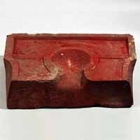Japanese Archaeology and Special Exhibition (Heiseikan) Japanese Archaeology Gallery
November 1, 2016 (Tue) - March 5, 2017 (Sun)
Okayama and Tottori prefectures make up the eastern half of the Chugoku region in western Japan. Neighboring each other while divided by the Chugoku mountains, Okayama, in the south, faces the Seto Inland Sea, while Tottori, in the north, faces the Japan Sea. Since the Yayoi period (ca. 5th century BC-3rd century AD), the area where these prefectures exist today saw exchanges with various regions nationally and internationally. New cultures, including those from the island of Kyushu and continental Asia, disseminated eastward through this area beyond the Kinki region, where today’s Osaka and Kyoto are situated.
Through research carried out during and after the 1970s, it was revealed that tumuli on the Japan Sea and Seto Inland Sea sides, many of which were created in the eastern area of the Chugoku region in the final phase of the Yayoi period, greatly influenced the establishment of the culture of tumuli (kofun in Japanese) in the Kinki region. One of the findings revealed that objects found in this area, such as stones placed on tumuli’s slopes and large, cylindrical clay objects, were the origins of stones that were laid to cover the tombs’ surfaces (fuki ishi) and haniwa terracotta tomb figurines, respectively. Furthermore, in the latter half of the Kofun period (ca. 3rd-7th century), a culture associated with tumuli that is unique to this region was fostered with some influence from the Kyushu and Kinki regions.
As part of the museum's exchange program of archaeological objects for FY 2016, this exhibition showcases the unique culture associated with tumuli in the eastern area of the Chugoku region, mainly through objects in the collection of the Okayama Prefectural Museum and the Tottori Prefectural Museum.

